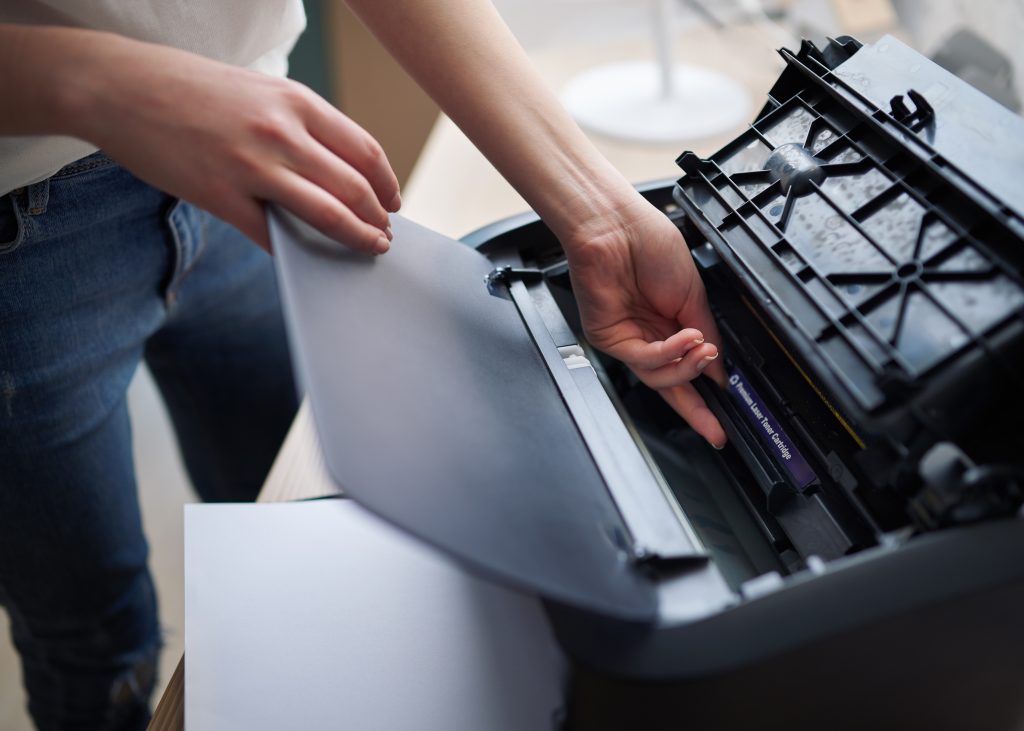Print quality refers to the overall appearance and clarity of printed documents or images. It encompasses factors such as the sharpness of text, the richness of colors, and the absence of any flaws or distortions. Achieving high print quality is essential for businesses and individuals alike, as it can significantly impact the professionalism and impact of printed materials. However, several issues can affect the print quality of a job, from the type of printer and paper used to the settings and conditions during the printing process. It is essential to address these potential issues to ensure satisfactory print results and avoid costly downtime.
Laser Printer
Laser printers are widely used in offices and homes for their high-quality and efficient printing capabilities. However, like any technology, laser printers are not immune to issues that can affect the quality of the print job. In this article, we will explore some of the potential problems that can arise when using laser printers and discuss how to address them for optimal printing results.
1. Toner Cartridge Issues: One common issue with laser printers is the quality of the toner cartridge. If a toner cartridge is worn out or nearing the end of its lifespan, it may not dispense enough toner onto the page, resulting in faded or streaky prints. It is essential to regularly check and replace worn-out toner cartridges to ensure consistent print quality.
2. Printer Settings and Controls: Another factor that can impact printing quality is the printer settings and control panel. Using incorrect printer settings or failing to adjust them to match the paper type and print requirements can lead to issues like pixelation, smudging, or uneven print density. It is crucial to double-check and adjust the printer settings to achieve the desired print quality.
3. Paper Selection: The choice of paper also plays a significant role in the print quality. Using the wrong type or texture of the paper can result in subpar print results, such as blurry or ink-bleeding prints. It is important to choose the appropriate paper type and ensure it is compatible with the laser printer for optimal printing performance.
4. Printer Maintenance: Regular printer maintenance is essential to prevent print quality issues. Over time, printers can accumulate dust, debris, or excess toner, which can impact print quality. Keeping the printer clean, including its internal components like the drums and rollers, will help maintain consistent and high-quality prints.
By addressing these potential issues with laser printers, users can ensure that they consistently produce high-quality prints for a range of printing needs. Regular maintenance, proper paper selection, and checking and adjusting printer settings are key to achieving optimal print results with laser printers.

Inkjet Printer
Inkjet printers are a popular choice for both home and office use due to their affordability and versatility. However, certain issues can affect the quality of the print job when using an inkjet printer. One potential issue is the type of paper being used. Inkjet printers are designed to work best with specific types of paper, such as coated or glossy paper. Using the wrong type of paper can result in poor print quality, with colors appearing dull or faded.
Additionally, using low-quality or non-branded ink cartridges can also lead to subpar print results. Inkjet printers rely on a precise balance of ink and pressure to create vibrant and accurate prints, and using inferior cartridges can disrupt this balance, resulting in blotchy or streaky prints. It’s important to use high-quality cartridges that are specifically designed for the make and model of the printer to ensure optimal print quality.
Lastly, incorrect printer settings or outdated printer drivers can also impact the quality of the print job. Adjusting the printer settings, such as print resolution and paper type, to match the requirements of the document can help improve print quality. Additionally, regularly updating the printer drivers can ensure compatibility with the latest software and technology, resulting in better print results. Keeping these potential issues in mind and taking the necessary steps to address them can help ensure high-quality prints when using an inkjet printer.
3D Printer
When it comes to 3D printing, several potential issues can affect the quality of the final print job. From the type of printer and filament used to the settings and calibration, various factors play a role in determining the print quality. In this article, we will explore some common issues that 3D printer users may encounter and offer solutions to ensure high-quality prints. Whether you are a beginner or an experienced user, understanding and addressing these issues will help you achieve the best results and make the most of your 3D printing experience. So, let’s delve into the world of 3D printers and explore how to overcome the challenges that may arise during the printing process.

Conclusion
In conclusion, there are a variety of potential issues that can affect the quality of both laser and inkjet printer prints, as well as 3D prints. It is important to be aware of these issues and take the necessary steps to address them to produce high-quality prints. Understanding the type of printer being used and its specific requirements, such as paper type and settings, is also essential for achieving optimal printing.


Average Rating